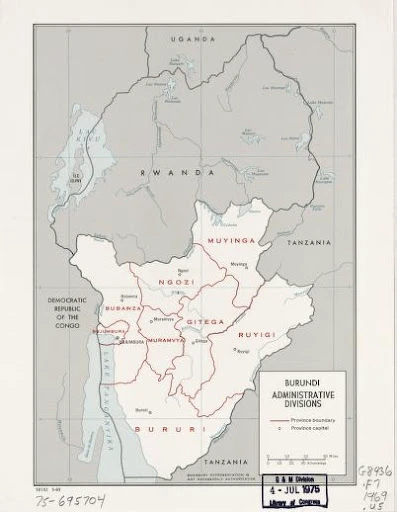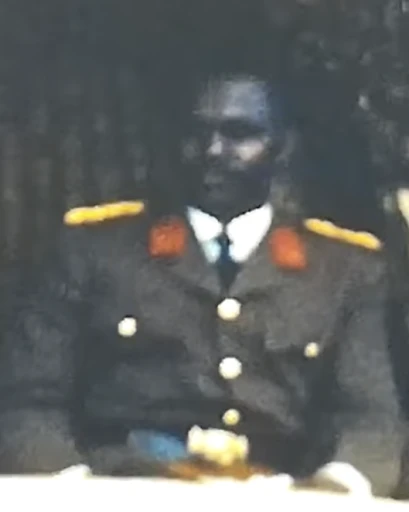Welcome to Burundi
For former United States Ambassador to Gabon and São Tomé and Príncipe, Joseph C. Wilson IV, the price for peace may always be too high to forget. If you’ve ever wondered what life looks like inside of an authoritarian regime following genocide and chaos, Wilson’s account may be of interest. A few years before his tenure as Deputy Chief of Mission in Bujumbura, Burundi, Wilson reminds us that in 1972 approximately “60,000 Tutsis were murdered during the first couple of nights.” However, this atrocity comes as no surprise for a nation that sits in a region plagued by bouts of genocide and ethnic cleansing. Although Wilson’s time in Burundi was not marked by this phenomenon, his diplomatic efforts abroad provide insight into an eerie historical moment and answers an overlooked question: What does effective diplomatic clean-up look like after genocide? What makes Wilson’s account so fascinating is that it offers a glimpse into the Burundian political situation just moments after thousands lost their lives in a major genocidal conflict. However, making sense of contemporary political tensions requires us to build a brief understanding of the two largest ethnic groups in Burundi.
A Brief History
Hutus and Tutsis account for 85 percent and 14 percent of Burundian people, respectively. Although contemporary history points to conflict, historically, the ethnic groups have coexisted before colonial incursion. According to The University of Pennsylvania’s African Studies Center, modern Hutu people are descendants of the Bahutu ethnic group that migrated north in the fourteenth century to establish a feudalist society. Two centuries later, the Batutsi people arrived, adopted feudalism, and merged culture and language with the Bahutu to create the Kingdom of Burundi. The two ethnic groups coexisted for centuries, and although social hierarchies were undoubtedly still present, the Kingdom of Burundi managed to survive without fracture until geopolitical borders established by colonial powers led to its dissolution.
The Silence After the Storm
Over half a millennium later, political instability and volatility overshadow centuries of Hutu and Tutsi culture. In this “Diplomatic Moment in History,” Wilson paints the picture of life inside Burundi as tensions were on the rise after the 1972 genocide event. Contrary to what many would think, according to Wilson, “life was good.” However, when asked about the justice system and freedom of press, Wilson admits that these aspects of Burundi were subpar. He argues that even though paranoia had set in for the Hutu and Tutsi ethnic groups, additional conflict was difficult to predict. However, Wilson reminds us that his time in Burundi immediately followed one of the most “radical Marxist Leninist socialist fascist military dictatorships that one saw during the Cold War in Africa.” As Deputy Chief of Mission, Wilson kept this in mind while organizing Peace Corps volunteers who collaborated with local governments to provide aid for local Burundians. Wilson’s commitment to providing humanitarian relief in the wake of one of the most horrific genocides in recent memory is a testament to his versatility and problem solving ability as a Foreign Service Officer.
Joseph C. Wilson IV’s interview was conducted by Charles Kennedy on January 8th, 2001.
Read Joseph C. Wilson IV’s full oral history HERE.
Drafted by Alexander Idonije
Edited by Kaitlyn Flynn
ADST relies on the generous support of our members and readers like you. Please support our efforts to continue capturing, preserving, and sharing the experiences of America’s diplomats.
Excerpts:
“When the Tutsis are in power, after a while, they get paranoid and then they get oppressive, and then you have essentially a return to some war as they force people into guerrilla activities.”
Massacres and Genocide:
Q: I would imagine that, both in Rwanda and Burundi, every head of family has to figure out when am I going to get the hell out of here, or how am I going to protect my family, or something like that—these massacres occur, particularly since independence apparently; it’s more a modern phenomenon.

WILSON: I think any family with some substance does exactly that. They try to have a way out and a place to go. In Burundi there was still this nightmare of the 1972 massacres. At the time that I was there, everybody was very sensitive to that; people sort of tiptoed around all the core issues. There was no such thing as a “Truth and Reconciliation” Commission. There was no such thing as facing up to the events of 1972. You would come at an event somewhat obliquely; people would in confidence tell you the stories of their experiences during 1972, whether Hutu or Tutsi, because the massacres took place both ways. There were 60,000 Tutsis who were murdered during the first couple nights, and then maybe 600,000 Hutu that were killed in the aftermath in a systematic fashion by the Micombero government and by the military.
There was still some sense of reconciliation after the 1972 massacres; people seemed to be focused on that. Towards the end of my tenure in Burundi, the Tutsi regime was getting paranoid again, which is a common thread through the politics of the region. When the Tutsis are in power, after a while, they get paranoid and then they get oppressive, and then you have essentially a return to some war as they force people into guerrilla activities.
Q: Did the Soviet Union, China, North Korea, or North Vietnam play any role there?

WILSON: The Chinese were building buildings. That’s what the Chinese did best. The North Koreans built a building. They built what I guess was going to be the new National Assembly. It was completed the year that I left. I actually went to an event there where President Bagaza spoke for about three and a half hours in Kirundi, which I certainly didn’t understand and nobody else in the diplomatic corps understood. But I remember distinctly sitting on these uncomfortable seats that had been put in by the North Koreans to fit people of North Korean stature. They were very tight for somebody over 5’6.” Your knees literally were up against the seat in front of you. The Burundians were pretty big people, and the seats were obviously too small. For three and a half hours in this seat listening to the speech in Kirundi was not the most pleasant of my experiences.
TABLE OF CONTENTS HIGHLIGHTS:
Education
University of California, Santa Barbara
Eastern Washington University
Joined the Foreign Service 1976
Washington, DC—Africa Bureau, Administrative Officer 1979–1981
Bujumbura, Burundi—Deputy Chief of Mission 1982–1985
Brazzaville, Congo—Deputy Chief of Mission 1986–1988
Gabon—Ambassador 1992–1995
Washington, D.C.—White House, National Security Council, African Affairs 1997–1998
